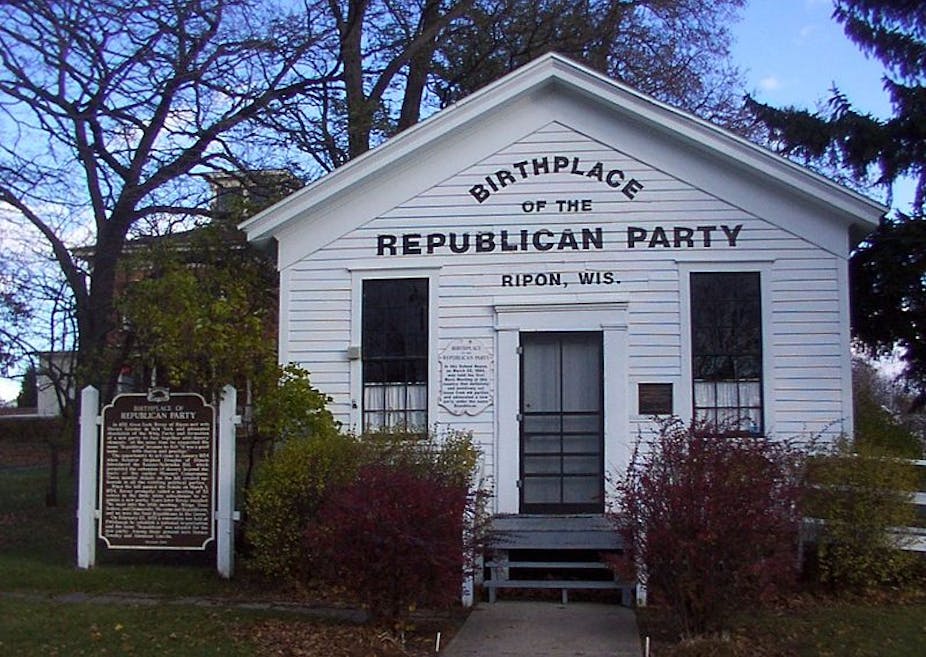When US Vice President Joe Biden complained recently that “There isn’t a Republican Party,” nobody thought to reply, “Well, it takes one to know one.” Not so long ago, a Republican might well have said the same thing about the Democrats.
From the chaos of the 1960s to Bill Clinton’s election as president in 1992, the Democrats were often as divided and fractious as today’s Republicans seem to be. In fact, Democratic faction-fighting has a long and storied history. In the 1920s, humorist Will Rogers famously said that he was not a member of an organised political party. “I’m a Democrat,” he explained.
Of course, there’s no question that today’s Republicans appear to be anything but united. As Biden rightly noted, the party couldn’t even speak with one voice in response to President Barack Obama’s State of the Union speech. There was no single, unifying Republican response, as is traditionally the case for the loyal opposition. “What was there, three or four?” Biden asked. There were, in fact, four formal responses. But there were dozens more from individual members of Congress, who saw no reason to coordinate their message for the party’s sake.
Still, the state of the Republican Party’s divisions may not be as dire as many commentators think. If anything, the party is more ideologically unified today than it was during the glory years of the 1970s and 80s, when the party dominated the White House.
Back then, Republicans were bitterly divided between liberals and conservatives. Nelson Rockefeller, the governor of New York from 1959-1973, personified the party’s liberal wing. Ronald Reagan emerged in the 1960s as the voice of a new conservative movement determined to rid the party of Rockefeller-style politics.
Today, Reagan’s mission is complete. The party has been purged of old-fashioned liberals, most of whom represented northeastern states that now are devoid of Republican representation in Congress. Far more than in the 1970s, the party is now uniformly – if not rigidly – conservative. By contrast, the 1976 Republican Party platform chose not to take a position on abortion, noting that some party members firmly believed in abortion rights. Those party members long ago lost influence in the party’s deliberations.
The real division in the Republican Party today is not between conservatives and liberals, or even between conservatives and moderates. The division is between professionals and amateurs.
Beyond good and evil
Professional politicians understand the importance of compromise, and even appreciate the basic humanity of their partisan antagonists. They accept the notion that politics often is the art of the possible. Amateurs, on the other hand, are full of passionate intensity, in Yeats’ words. They are single-minded and uncompromising. They will shut down the government rather than yield to foes they invariably see not as colleagues but as traitors, evil-doers, and perhaps, given all that passionate intensity, representatives of Satan himself.

In a healthy democracy, no professional politician should conceive of government and politics in such starkly moralistic terms. If nothing else, such a position rules out, by definition, compromise. How can one compromise with evil? But that is the position in which the Republican Party’s amateurs have placed themselves. They will not compromise even on prosaic issues like the debt ceiling, and they treat as heretics those who do – like their fellow Republican and House Speaker John Boehner.
These Republican amateurs are crowded into the Tea Party caucus, a place where compromise goes to die. The idols of this crowd are people like Texas Senator Ted Cruz and Kentucky Senator Rand Paul, both of whom curl their lips with contempt when speaking of professional politicians in either party.
Ironically, when Biden made his observation about the multiplicity of Republican parties, some Republican professionals may have nodded their heads in agreement. Order and discipline are the hallmarks of a professional political organisation. The disorder in the party’s ranks must gall them.
But amid all the sound and fury within the Republican Party, it’s important to realise that on big issues, and even some small issues, the party has achieved some ideologicial consensus. A thousand flowers are not blooming in today’s Republican Party, or at least not in the party’s congressional caucus.
The question for the party’s future is therefore not over policy or dogma. The question is whether it will remain in the hands of professionals who understand the art of the deal, or if it will be overrun by amateurs who see compromise – the very heart of the democratic process – as intrinsically evil.

